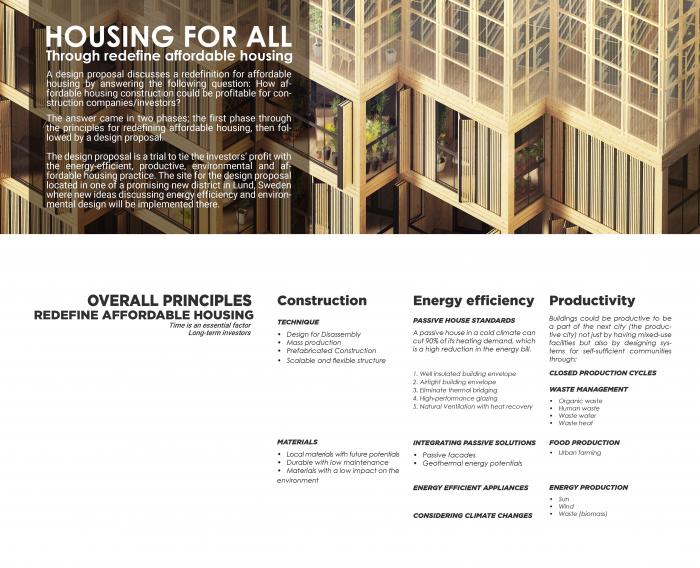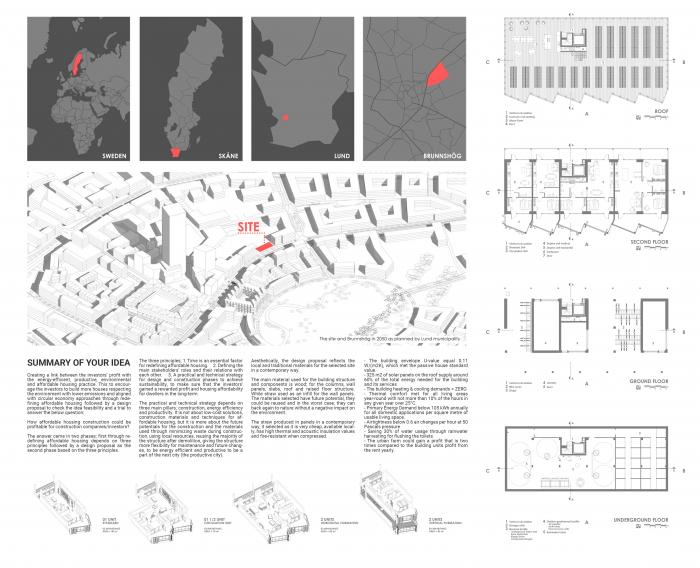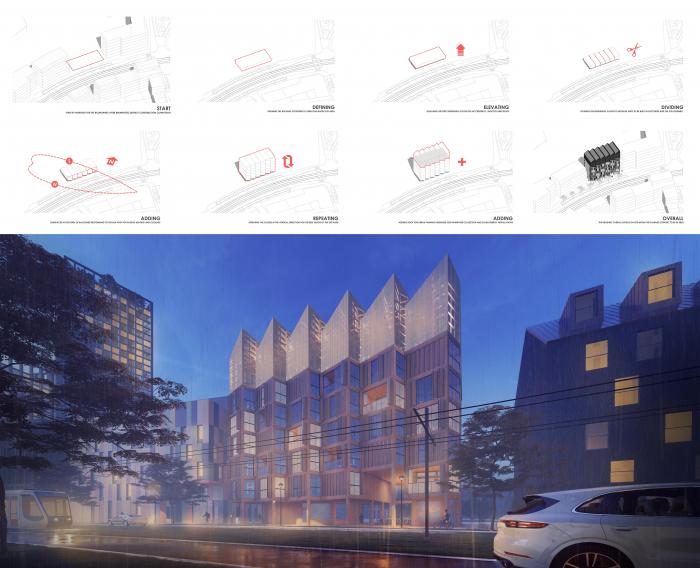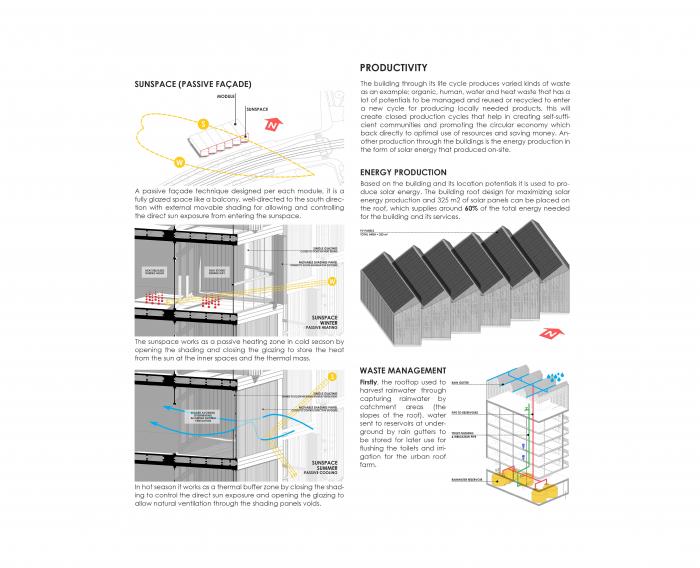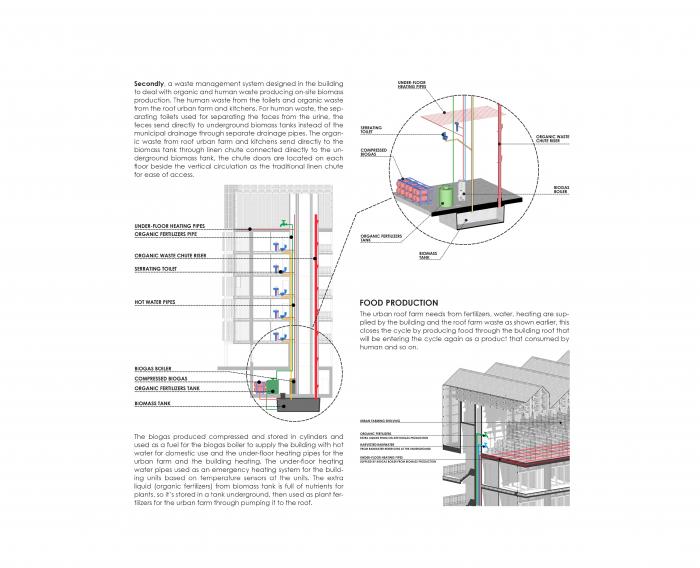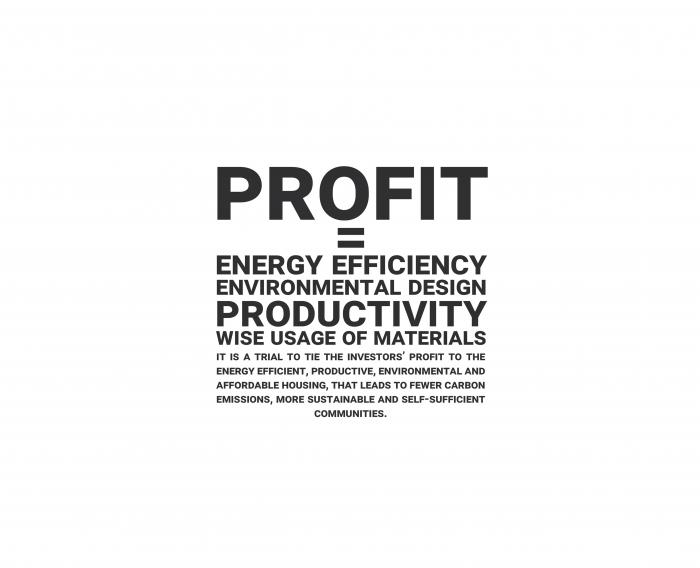I. SUMMARY INFORMATION
Project
268149
Status
Submitted
Award category
Techniques, materials and processes for construction and design
You want to submit
NEW EUROPEAN BAUHAUS RISING STARS : concepts or ideas submitted by young talents (aged 30 or less)
Project title
Housing for All
Full concept/idea title
Redefining housing affordability through energy efficient, environmental and productive design
Description
High-quality housing according to the Swedish market tied to high construction, rental and running costs. It is not granted that high-quality housing respects the environment during its construction, running and demolition phases. While affordable housing tied to low-quality housing that the investor is not interested to build due to economical factors.
This project is a trial to tie the investors’ profit with the energy-efficient, productive, environmental and affordable housing practice.
Where is your concept/idea being developed or intended to be implemented in the EU?
Sweden
Skåne
Brunnshög
55°43'18.7"N
13°13'57.8"E
Lund
225 92
II. DESCRIPTION OF THE PROJECT
Please provide a summary of your concept/ idea
Creating a link between the investors’ profit with the energy-efficient, productive, environmental and affordable housing practice. This to encourage the investors to build more houses respecting the environment with lower emissions and aligned with circular economy approaches through redefining affordable housing followed by a design proposal to check the idea feasibility and a trial to answer the below question:
How affordable housing construction could be profitable for construction companies/investors?
The answer came in two phases; first through redefining affordable housing depends on three principles followed by a design proposal as the second phase based on the three principles.
The three principles;
Time is an essential factor for redefining affordable housing.
Defining the main stakeholders’ roles and their relations with each other.
A practical and technical strategy for design and construction phases to achieve sustainability, to make sure that the investors' gained a rewarded profit and housing affordability for dwellers in the long-term.
The practical and technical strategy depends on three main pillars; construction, energy efficiency and productivity. It is not about low-cost solutions, construction materials and techniques for affordable housing, but it is more about the future potentials for the construction and the materials used through minimizing waste during construction, using local resources, reusing the majority of the structure after demolition, giving the structure more flexibility for maintenance and future changes, to be energy efficient and productive to be a part of the next city (the productive city).
The strategy’s principles applied to a proposed apartment building design in a promising new district in Lund, Sweden where many new ideas discussing energy efficiency and environmental design.
Please give information about the key objectives of your concept/idea in terms of sustainability and how these would be met
The three strategy’s principles applied to target sustainability and its three pillars through focusing on energy efficiency, wiser usage of materials, circular economy principles and self-sufficient communities approach.
1. Construction
Will ensure low carbon emissions, minimal construction waste and reusing the majority of the structure after demolition through:
Technique:
Design for disassembly
Mass production
Prefabricated modular construction
Scalable and flexible structure
Materials:
Local materials with future potentials
Durable with low maintenance
Have low impact on the environment
2. Energy Efficiency
Will control carbon emission, reduce energy consumption and to assure lower operational costs through:
Passive house standard used as a guide as it can cut 90% of the heating demand through; a well insulated and airtight building envelope, reducing thermal bridging, natural Ventilation with heat recovery and using high-performance glazing.
Applying passive solutions depending on the sun in a direct or an indirect way as an example in the design the sun space and using geothermal energy for preheating/precooling air.
3. Productivity
The design proposal aimed to be a part of a productive city, that could be a way to improve the process of hybridization between local and global economies, macro and micro strategies.
The building systems designed to maximize the waste management for on-site production to close the cycle within the building. The building produces organic, human, water and heat waste managed and recycled to enter a new cycle of production (Urban farm).
The roof designed to maximize solar energy production and to collect rainwater for on-site usage. This can create new opportunities for more recycling, social interactions and urbanity.
Please give information about the key objectives of your concept/idea in terms of aesthetics and quality of experience beyond functionality and how these would be met
Aesthetically, the design proposal reflects the local and traditional materials for the selected site in a contemporary way.
The main material used for the building structure and components is wood; for the columns, wall panels, slabs, roof and raised floor structure. While straw used as an infill for the wall panels. The materials selected have future potential, they could be reused and in the worst case, they can back again to nature without a negative impact on the environment.
The straw produced in panels in a contemporary way, it selected as it is very cheap, available locally, has high thermal and acoustic insulation values and fire-resistant when compressed.
Regards the quality, theoretically
The building envelope U-value equal 0.11 W/(m2K), which met the passive house standard value.
325 m2 of solar panels on the roof supply around 60% of the total energy needed for the building and its services
The building heating and cooling demands equal to ZERO
Thermal comfort met for all living areas year-round with not more than 10% of the hours in any given year over 25°C.
Primary Energy Demand below 105 kWh annually for all domestic applications per square metre of usable living space.
Airtightness below 0.6 air changes per hour at 50 Pascals pressure
Saving 30% of water usage through rainwater harvesting for flushing the toilets.
No extra cost for hot water.
The urban farm could gain a profit that is two times compared to the building units profit from the rent yearly.
All the above points show how the principles of the affordable housing redefinition applied to the apartment building design proposal ensured the affordability for the tenants and the profit for the investors in the long-term conceptually by considering the circular economy, self-sufficient community approaches, energy efficiency and wiser usage of materials.
Notes:
Total site area = 300 m2
Building footprint = 150 m2
Total number of units = 20 units
Number of inhabitants = 52
Please give information about the key objectives of your concept/idea in terms of inclusion and how these would be been met
Tying energy efficiency, environmental design, wiser use of materials and productivity to the affordable housing practice and the investor's profit to encourage them to invest more in these types of housing that could help in resolving many issues we have today in the housing market and regards the sustainability.
Wood, wood products and straw available locally, have a future potential to be re-used, need low maintenance and the advanced technologies made them cheaper and faster in production. The mass production of the modules saves materials, time and increase efficiency with the least number of workers.
The building designed to be energy-efficient based on the passive house standards and passive design solutions, which directly will reduce the energy bills, protect the building from any sudden rise in energy prices and profitable in the long-term due to the extremely low running costs.
The on-site waste management and energy production, the on-site biogas and solar energy will cut the expenses of the needed energy for heating and part of the units’ electricity, while rainwater harvesting reduces the water demand for the urban farm irrigation and toilet flushing. The building waste used for urban farming, which enhances the circular economy within the city. The investor has the right to use the building's waste for another production cycle that fits the building function and the context. This definitely more profitable if compared to investing in a new vacant land in the same kind of production.
The ideal usage of resources, production on-site and waste management offer a high potential for gaining profit by saving, producing and recycling. This sustains the profit for the investor in the long run, which helps directly in creating more housing for more profit and benefits. This ensures long-term housing affordability and creating self-sufficient communities depending on its local resources and maximising the benefits from the waste they produce.
Please explain the innovative character of your concept/ idea
Building affordable housing profitable for the investors compared to the current market housing practice through the design of building systems that align with sustainability and circular economy. Targeting lower CO emissions, use of local materials, reducing energy consumption and maximizing waste management for another cycle of production on-site.
One of the key elements used in the proposal is design for disassembly; to facilitate future changes, adopting new ideas, saving money, time and resources. The majority of the building components will be used without losing significant value at eventual dismantlement.
This applied in design through:
Materials with potentials for reuse and recycling used.
Chemical connections minimized and instead bolted connections used.
MEP systems separated through the raised floor.
Materials and systems that exhibit principles of modularity used that will facilitate reuse.
In alignment with the used passive house standard, a two phases natural ventilation heat recovery system designed to use geothermal energy and the inner spaces used air to pre-heat the fresh air in two steps during the winter. While the geothermal ventilation system could work alone for pre-cooling in the summer when it is needed.
The main waste management system designed in the building dealing with organic (from kitchen & urban farm) and human waste producing on-site biomass production. The organic waste sends to the biomass tank through a linen chute on each floor. The biogas produced compressed and stored in cylinders then used as fuel for the biogas boiler to supply hot water for domestic use and the under-floor heating pipes for the urban farm and the under-floor heating for the units as an emergency heating system depends on sensors. The extra liquid (organic fertilizers) from the biomass tank is full of nutrients for plants, so it’s stored in a tank underground, then used as plant fertilizers for the urban farm through pumping it to the roof.
Please detail the plans you have for the further development, promotion and/or implementation of your concept/idea, with a particular attention to the initiatives to be taken before May 2022
The following steps could be done before May 2022 as the following:
Reevaluating the functionality and the practicality of the idea as a whole
Focusing on the building systems and updating based on the practical solutions by getting advice and evaluation from the experts in the field.
Applying for a fund or getting a fund for testing.
Redesign the design proposal on a small scale to check the idea feasibility, could be a small house unit or just a module from the building to check the idea feasibility.
Collaborating with the stakeholders that might be interested in testing some ideas based on the design proposal main theme for a small scale project.
III. UPLOAD PICTURES
IV. VALIDATION
By ticking this box, you declare that all the information provided in this form is factually correct, that the proposed concept/idea has not been proposed for the New European Bauhaus Rising Stars Awards more than once in the same category.
Yes
